Netizens doubt Singapore’s revised ‘30 by 30’ food plan, cite high costs for local produce
Netizens have expressed scepticism over Singapore’s revised ‘30 by 30’ food plan, which aims to boost local production by 2035. They raised concerns about high costs of local produce and urged government subsidies to help farmers make it more affordable.

- Singapore has extended its “30 by 30” food production goal from 2030 to 2035, aiming to produce 20% of fibre and 30% of protein needs locally.
- The government plans to strengthen food resilience through import diversification, local production, stockpiling, and global partnerships, while exploring shared multi-tenant farming facilities.
- Netizens expressed scepticism online, citing high costs of local produce, regulatory hurdles, and called for subsidies to support local farmers.
SINGAPORE: Netizens have expressed doubt over Singapore’s revised ‘30 by 30’ food plan, citing the high cost of local produce. Many called on the government to provide subsidies to local farmers to make locally grown food more affordable.
The government recently extended its goal of boosting local food production from 2030 to 2035, acknowledging the growing challenges faced by the agricultural sector, including high operating costs, manpower shortages, and multiple farm closures.
The revised strategy, announced by Minister for Sustainability and the Environment Grace Fu on 4 November, introduces a series of initiatives to revitalise the agri-food industry and strengthen Singapore’s food resilience.
Singapore’s original “30 by 30” vision, launched in 2019, sought to produce 30 per cent of the nation’s nutritional needs locally by 2030.
Following a year-long review, the government has refined the plan to target producing 20 per cent of the country’s fibre needs and 30 per cent of its protein needs by 2035.
Fibre includes leafy and fruited vegetables, beansprouts, and mushrooms, while protein covers eggs and seafood.
According to the Singapore Food Agency (SFA), local farms met about 8 per cent of fibre and 26 per cent of protein consumption in 2024. However, the 8 per cent figure reflects a narrower definition of fibre that excludes rooted vegetables and bulbs.
In the 2024 food statistics report, only 3 per cent of vegetables were locally grown, while 34.4 per cent of eggs and 6.1 per cent of seafood came from domestic farms.
Constraints and Setbacks
Fu admitted that the original 2030 target had been overly ambitious given Singapore’s physical and economic constraints. Only about one per cent of the nation’s land is allocated for agriculture, and the industry continues to grapple with high costs, limited manpower, and financing difficulties.
“Like their peers in other countries, our local agri-food sector has faced headwinds,” Fu said at the Asia-Pacific Agri-Food Innovation Summit. “This has led to delays in farm development and some exits, even as we witnessed new start-ups.”
Several local agri-tech firms, including I.F.F.I and VertiVegies, have either shut down or halted expansion plans in recent years. Around a quarter of sea-based farms also exited the industry in 2024 due to higher operational expenses and new sea space charges.
Strengthening Food Resilience Through a Four-Pronged Strategy
To bolster food resilience, Singapore will adopt a four-pillar strategy focusing on import diversification, local production, stockpiling, and a newly added component—global partnerships.
Global partnerships aim to strengthen government-to-government food trade agreements to ensure supply continuity, following disruptions such as Malaysia’s 2022 chicken export ban. Singapore has already established pacts with Vietnam for rice and with New Zealand for essential food items.
Stockpiling will remain a key part of Singapore’s food security framework, covering foods with longer shelf lives such as rice, frozen chicken, and canned goods.
Shared Farming Facilities and Innovation
To reduce costs, the SFA is studying a new multi-tenant farming facility concept that would allow different farms to share utilities, logistics, and processing areas.
SFA chief executive Damian Chan said the facility could be the first of its kind globally and may be government-owned. “If production costs are reduced, local farmers can lower prices and improve sales,” he said. “This will also ease regulatory and investment barriers for new entrants.”
The feasibility study is expected to take 12 to 18 months, with consultations ongoing with potential tenants. Findings will also inform land-use plans for the upcoming 390-hectare Lim Chu Kang agri-food hub, which has faced delays alongside the Agri-Food Innovation Park.
Supporting Local Producers
Recent measures to assist local producers include supplying farms with baby fish and healthier eggs, as well as linking them with reliable buyers such as eateries and supermarkets to ensure consistent demand.
While Singapore was the first country to approve cultivated meat for sale in 2020, Fu said cultivated and plant-based proteins would not form part of the nation’s immediate food security strategy due to high production costs and limited consumer uptake.
The SFA added that while alternative proteins may play a role in the future, ongoing research and industry development will continue to prepare for emerging opportunities.
Netizens Raise Cost and Subsidy Concerns
On social media platforms such as CNA, Mothership, The Straits Times’ Facebook page, and Reddit, many netizens expressed concern about the high costs of local produce and called for government subsidies to make locally grown food more affordable.


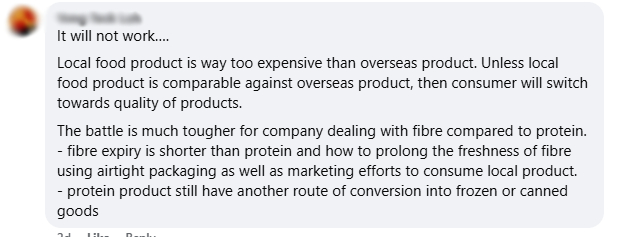
One user suggested that the government should continue pursuing the goal but address the high operating costs faced by local farms, particularly those involved in vertical farming.
The user noted that these costs are reflected in the prices of locally produced food, making it difficult to encourage consumers to buy local when cheaper imported alternatives are available.

Another remarked that, according to SFA guidelines, it takes 57–94 weeks of planning and coordination with 11 national agencies for high-tech farming before farmers can plant their first seeds.
“The investments needed just to get through applications and build infrastructure—I can’t imagine any capitalist being willing to take on the risk,” the user wrote, adding that the business case for farming in Singapore is currently unsustainable unless the government is willing to subsidise local produce.
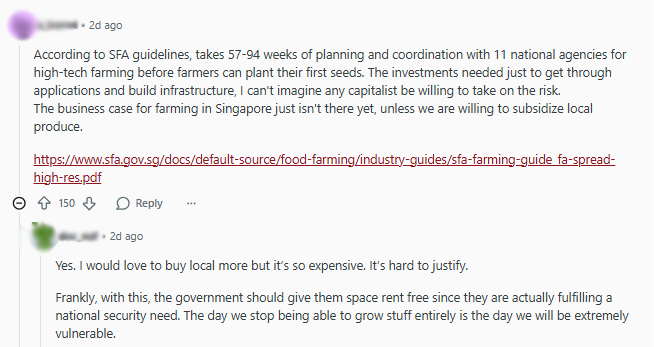
One commenter who claimed to have spoken with bankers said that farmers are struggling financially as there is little to no government subsidy to support them.
Without sufficient assistance, the user added, the fledgling industry cannot compete with large importers.
“Singapore simply does not protect our own industries which is not only disappointing, it also puts us in a vulnerable position,” the commenter said.
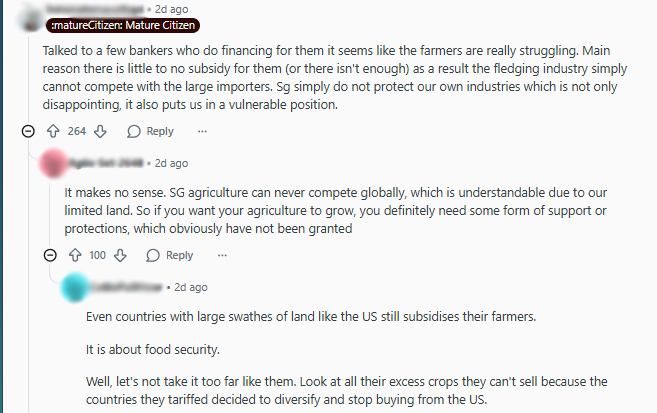
“It’s Not Achievable”
Several users felt that the plan was not realistic in the first place.
One user cited restrictive regulations that have left much farmland unused and noted that new lease terms pressured existing farms to innovate without providing sufficient access to capital.

Another questioned why Singapore does not collaborate with neighbouring countries that have cheaper land and labour, suggesting that Singaporeans could invest as part-owners in regional farming ventures instead of pursuing costly domestic projects.
“I am a Singaporean but I know the 30/30 plan won’t work since they announced the plan,”the user wrote.
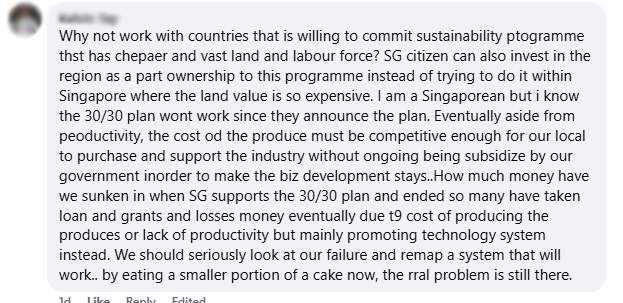
Others pointed to the rigid 10-year farm lease with strict minimum yield requirements as a major obstacle, saying it stifles the experimentation needed to achieve better outcomes.
One user remarked that the government expects farming solutions that are “fast, cheap, and high-yielding—an unrealistic combination given current technological and financial limitations,” leaving little room for failure or adaptation.

Alternative Ideas: Community and Rooftop Farming
Some netizens proposed shifting the focus towards community-based farming.
One suggested that the government invest more in community gardens and expand rooftop farming initiatives, while also teaching residents how to grow edible crops suitable for Singapore’s HDB environment.
The user added that every household should be encouraged to cultivate edible plants on their balconies, helping Singaporeans contribute directly to food resilience at the community level.



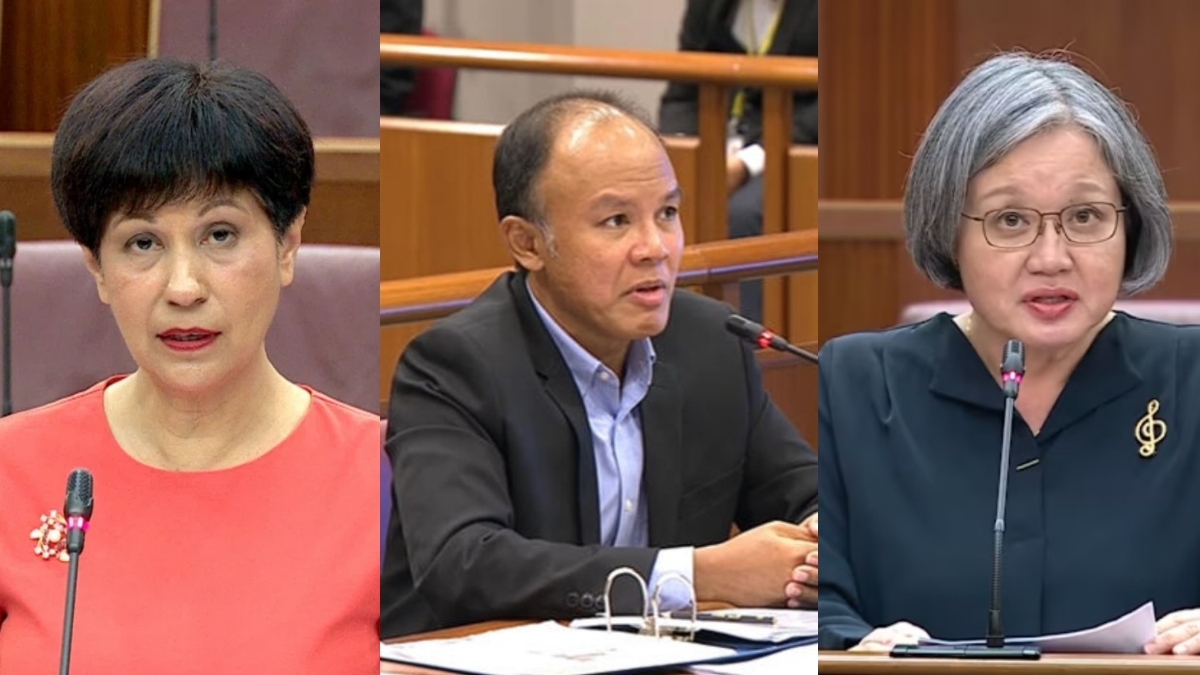

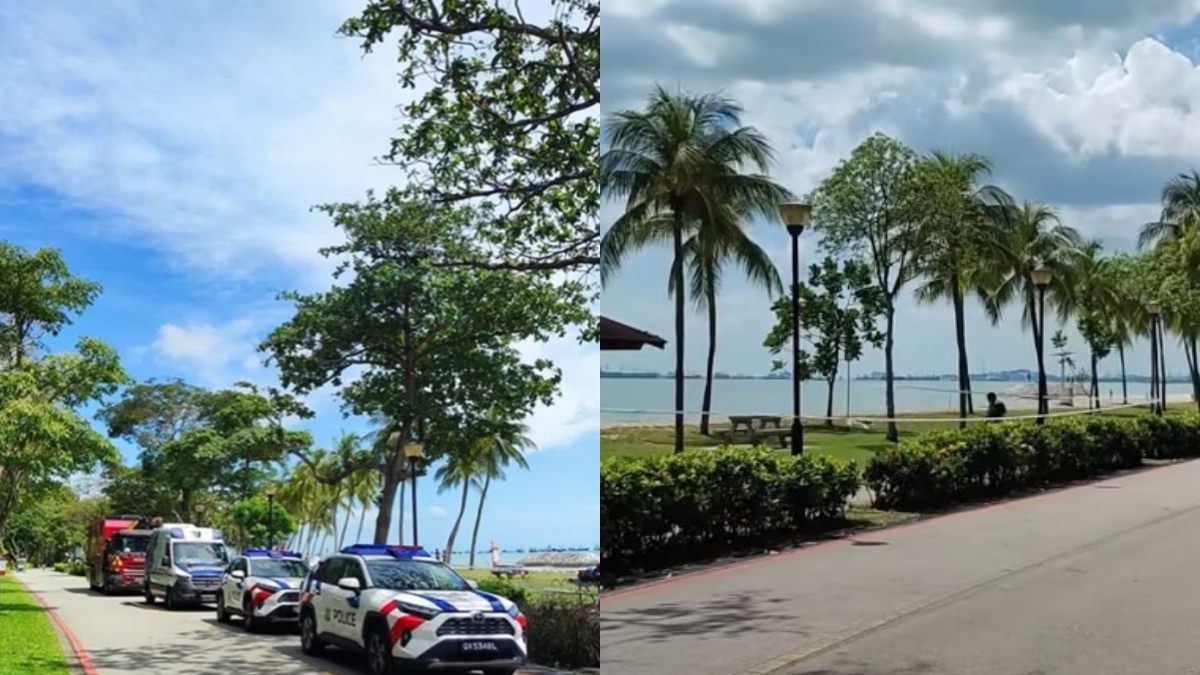
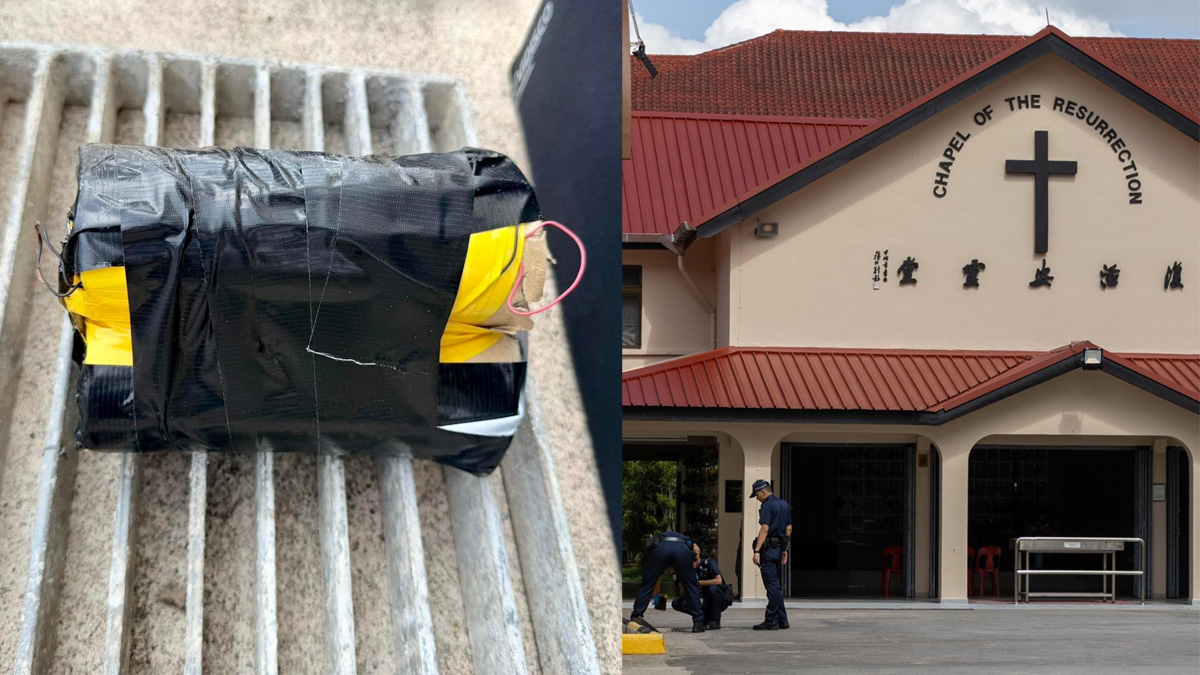
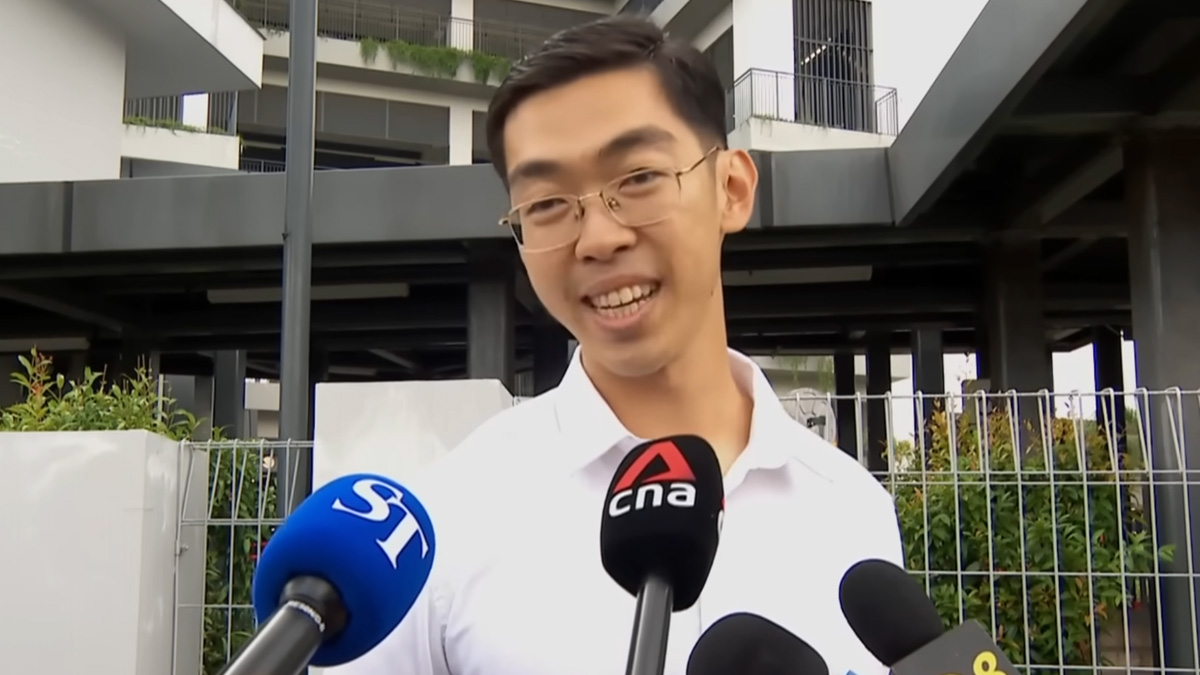

0 Comments